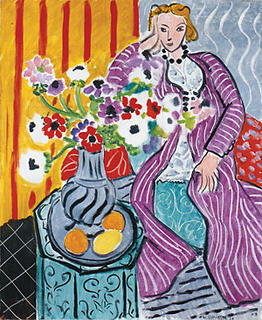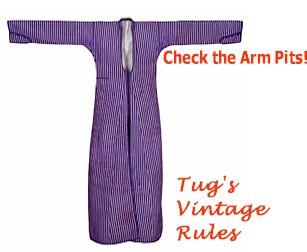

For TUG: Odalisque
o·da·lisque also o·da·lisk noun.
A concubine or woman slave in a harem. http://www.dictionary.com
Editied Press Release from the MET re this exhibit:
For more images of this exhibit visit the Met @ http://www.metmuseum.org/special/Matisse_Textiles/images.asp
Matisse: The Fabric of Dreams His Art and His Textiles
Exhibition dates: June 23 – September 25, 2005
Exhibition location: Iris and B. Gerald Cantor Exhibition Hall
The first exhibition to explore Henri Matisse’s (1869–1954) lifelong fascination with textiles and its profound impact on his art will open at The Metropolitan Museum of Art on June 23, 2005.
Matisse: The Fabric of Dreams – His Art and His Textiles features 45 painted works and 31 drawings and prints displayed alongside examples from Matisse’s personal collection of fabrics, costumes, and carpets.
The exhibition marks the first public showing of Matisse’s textile collection – referred to by the artist as his “working library” – which has been packed away in family trunks since Matisse’s death in 1954. The exhibition remains on view at the Metropolitan through September 25, 2005.
Among the many highlights will be such celebrated paintings as
- Still Life with Blue Tablecloth (1909, The State Hermitage Museum, Saint Petersburg),
- Seated Odalisque (1926, The Metropolitan Museum of Art),
- Woman in Blue (1937, Philadelphia Museum of Art),
- Purple Robe and Anemones (1937, The Baltimore Museum of Art),
- and The Dream (1940, private collection).
The selection of approximately 35 textiles ranges from a fragment of printed cotton purchased at a flea market to Parisian couture gowns, African wall hangings, and Turkish robes.
Matisse and Textiles
For generations Matisse’s family had been involved in the textile industry in northern France. He had an innate appreciation for textiles and was an avid collector of fabrics, from his early days as a poor art student in Paris to the latter years of his life, when his Nice studio overflowed with exotic costumes and wall hangings. Used traditionally at first, as mere background elements in his compositions, textiles soon became the springboard for his radical experiments with perspective and an art based on decorative patterning and pure harmonies of color and line.
Exhibition Organization and Contents
Arranged thematically and chronologically, the exhibition begins with a group of early still-lifes from the 1890s, reflecting Matisse’s academic training, in which textiles appear in a subdued and subordinate role. In a remarkable series of paintings from the early 1900s, including Pierre Matisse with Bidouille (1904, private collection) and two versions of Still-life with Blue Tablecloth (1905-6 and 1909, both The State Hermitage Museum), a length of blue-and-white floral fabric – acquired by Matisse in 1903 from a used clothing shop – evolves from decorative backdrop to the driving force behind the entire composition, filling the canvas with energy and color.
Paintings from Nice, where Matisse began to live and work in 1918, include a series of odalisques dressed in North African costumes and posed among carpets, cushions, and screens draped with fabrics. The emphasis on chromatic brilliance and decorative patterning is taken to great extremes in these works, in which the sinuous lines and forms of his models appear to merge with the richly ornamental elements of their surroundings. A number of the props used in these paintings will be on view, including several Haiti, a type of North African pierced and appliquéd hanging seen in the backgrounds of Reclining Odalisque (1926, The Metropolitan Museum of Art) and Odalisque with Grey Culottes (1926-27, Musée National de l’Orangerie, Paris), and an Ottoman striped silk robe worn by the model in both Purple Robe and Anemones and Small Odalisque in a Purple Robe(1937, private collection). Also on view will be Romanian peasant blouses from Matisse’s textile collection that are worn by his female sitters in a series of pen-and-ink drawings from 1930s and 1940s, and in one of his most famous paintings, Le Rêve.
During the last decade of his life, Matisse became interested in African Kuba cloths, which are raffia cloths embroidered with geometric patterns. The artist hung these cloths on the walls of his studio next to his own brilliantly painted paper cut-outs. The final gallery of the exhibition will be devoted to this juxtaposition and will also include a set of vestments that Matisse designed for the Chapelle du Rosaire at Vence.
Exhibition Credits and Catalogue
The exhibition has been organized principally by Ann Dumas, an independent art historian associated with the Royal Academy of Arts, and Hilary Spurling, a British-based biographer of Matisse. The presentation at the Metropolitan has been curated by Gary Tinterow, Engelhard Curator in Charge, and Rebecca Rabinow, Associate Curator, both in the Department of Nineteenth-Century, Modern, and Contemporary Art.

No comments:
Post a Comment